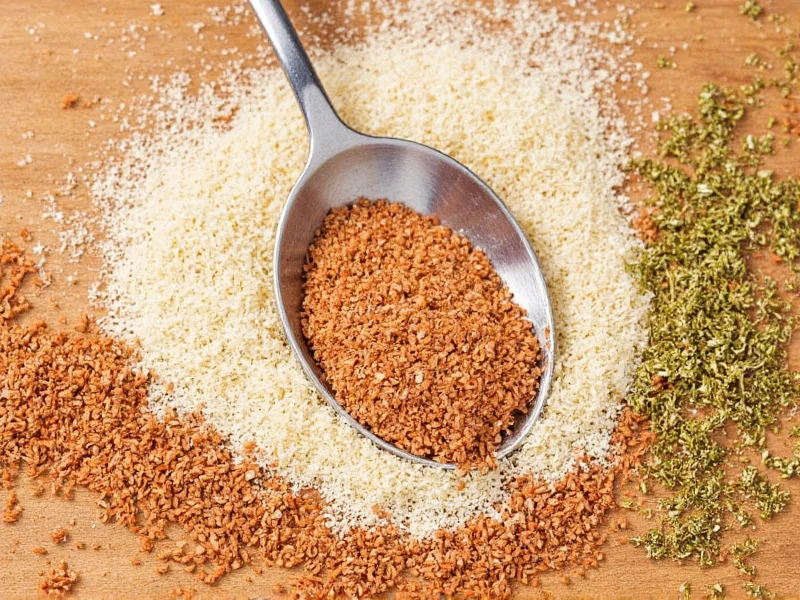All-purpose seasoning represents one of the most practical solutions for home cooks seeking consistent flavor enhancement. This multi-ingredient blend eliminates the need to measure multiple spices separately while delivering professional-quality results. Understanding what is all purpose seasoning made of helps cooks make informed choices about which blends best suit their culinary needs.
Core Ingredients in All-Purpose Seasoning
The specific composition varies by brand and regional preferences, but most all-purpose seasonings share common foundational ingredients. These blends typically combine salt with aromatic dried herbs and spices that complement a wide range of proteins and vegetables. The magic lies in the careful balance—no single flavor should dominate, allowing the seasoning to work across diverse recipes.
| Common Ingredient | Flavor Contribution | Typical Percentage |
|---|---|---|
| Salt | Flavor enhancer, texture contributor | 40-60% |
| Garlic powder | Savory depth, umami notes | 15-25% |
| Onion powder | Sweetness, aromatic base | 10-20% |
| Paprika | Color, mild sweetness or heat | 5-15% |
| Black pepper | Subtle heat, complexity | 3-10% |
| Dried herbs (thyme, oregano, etc.) | Earthy notes, aromatic complexity | 2-8% |
Distinguishing All-Purpose Seasoning from Similar Products
Many home cooks confuse all-purpose seasoning with other common spice blends. Understanding the difference between all purpose seasoning and salt is fundamental—while salt enhances existing flavors, all-purpose seasoning adds multiple flavor dimensions. Unlike garlic salt or onion powder (single-note seasonings), all-purpose blends provide layered complexity.
Cajun seasoning and Italian seasoning serve specific regional cuisines, whereas true all-purpose seasoning works across culinary traditions. The best all purpose seasoning for cooking maintains versatility without leaning too heavily toward any single cuisine's flavor profile. This universal adaptability makes it valuable for weeknight cooking when time constraints prevent custom spice blending.
Practical Applications in Everyday Cooking
Professional chefs and home cooks alike rely on all-purpose seasoning for its time-saving benefits and consistent results. When exploring how to use all purpose seasoning in recipes, consider these applications:
- Meat preparation: Rub generously on chicken, beef, or pork before roasting or grilling
- Vegetable enhancement: Toss with olive oil and seasoning before roasting
- Soup and sauce base: Add during sautéing for foundational flavor
- Quick marinades: Combine with oil and vinegar for instant marinade
- Popcorn seasoning: Sprinkle on freshly popped corn with melted butter
For those concerned about sodium content, many brands now offer reduced-sodium versions. Alternatively, creating a homemade all purpose seasoning recipe allows complete control over ingredients and salt levels. A basic DIY version combines 2 parts salt, 1 part garlic powder, 1 part onion powder, ½ part paprika, and ¼ part each of black pepper and dried herbs.
Commercial Brands vs. Homemade Blends
Popular all purpose seasoning brands like Lawry's, McCormick, and Badia have established market presence, but homemade versions offer customization advantages. Commercial blends provide consistency and convenience, while DIY versions let cooks adjust ingredients to personal taste preferences and dietary needs.
When evaluating popular all purpose seasoning brands, check labels for additives like MSG, anti-caking agents, or sugar. Higher-quality commercial blends focus on pure spices without unnecessary fillers. For those with specific dietary requirements, making your own blend ensures complete ingredient transparency—a valuable consideration when exploring what is all purpose seasoning made of at its purest form.
Maximizing Flavor Impact
To get the most from your all-purpose seasoning, apply these professional techniques:
- Season in layers—add some during cooking and finish with a light sprinkle before serving
- Combine with acid (lemon juice or vinegar) to brighten flavors
- Store in an airtight container away from heat and light to preserve potency
- Toast homemade blends in a dry pan for 1-2 minutes to intensify flavors
- Adjust quantities based on dish moisture content—drier foods need more seasoning
Remember that all-purpose seasoning should enhance, not dominate, your dish. Start with smaller amounts and adjust to taste, particularly when using commercial blends that may contain higher salt concentrations than homemade versions. This approach ensures your cooking maintains balance while benefiting from the seasoning's flavor-boosting properties.











 浙公网安备
33010002000092号
浙公网安备
33010002000092号 浙B2-20120091-4
浙B2-20120091-4